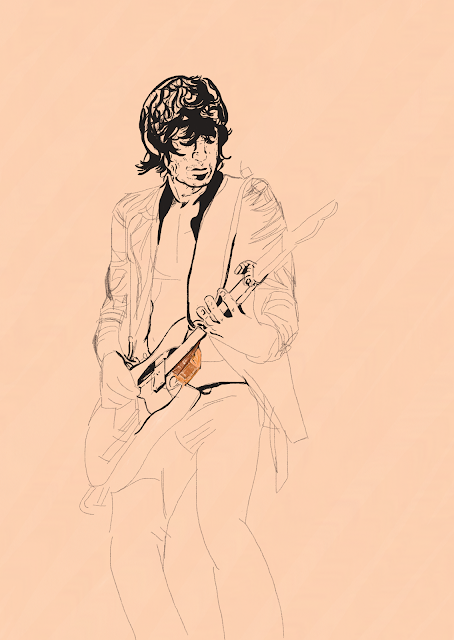This was (initially) a few words I put down in a message to a friend in order to attempt to explain why the silly, infantile, medium of comics, matters to me.
I've edited it slightly, yet the majority of it is untouched and is presented as created:
The Never-Ending Struggle
Like the three other major industries of the 20th century which are termed "pop culture", these being the movie industry, the TV industry, and the music industry, comics exist only as a vehicle to make lots of money. As can be seen by the tendency of the comic companies to continue using characters without end (Superman is 83 years old this year, Batman 82, Captain America 80, The Hulk and Spider Man 59), the content and reality of the product matters less than the fact that people are buying it (obviously). I mean, the characters do change to fit with the times, but you will never see any of the companies actually do something truly radical, like killing off Superman, Batman, Wolverine, and Captain America for good (I mean, they've "killed" them but somehow they always get better).
Now, in stark contrast to this attitude there are the people who actually create them, those pesky, annoying people with a desire to make something more than the sum of its parts, the writers and artists. This is not to say that comics are some kind of bohemian free-for-all of endless creative freedom, they're not. However, over the 100 years and more that comics have existed as an object, there have been a few who have pushed the limits imposed upon them by the thoughtless money counting masters who own the product, with varying levels of success and failure. Numerous examples and tales of artists and writers who were used, abused, and ostracised by the Industry, and numerous characters, stories and comics that were cancelled due to the simple fact that it wasn't cost-effective to continue printing their adventures.
Yet, the artists and writers continued to create, publishing their work in hand-stapled, self-printed comics, fanzines, and now the internet. There were people who formed independent companies to challenge the suffocating banality of the majority of comics (a failed endeavour alas, due to numerous reasons I will not go into now). Occasionally, there were times when the Industry changed to accommodate these creative souls, forming the notion of comics as some kind of art-form, reflecting the issues, and social problems, of the times. Proclaiming artists and writers as great creative geniuses, yet always keeping them constricted by the limbo-esque nature of merchandising and brand recognition.
This is why I love comics, at their heart comics are free-expression and creativity, whether by their reflecting the influence and history of actual art (you know, paintings in galleries and whatever, though that's another tale for another time), or by writers moulding the concepts and stories of ancient myth and folklore into a new pantheon of gods and heroes (quite literally in the case of Thor and Wonder Woman), portrayed in 20 pages a month for children who think the story of Beowulf is boring, or Shakespeare is confusing.
It is this desire for the medium to actually matter (due to people's ego, or a honest need to create) in stark conflict with the soulless need to make profit regardless of the content produced, which to some extent I find fascinating. This is on a higher level than just reading, looking at, and enjoying the skill and expertise of the stories the creative teams produce for our enjoyment (which is a subject I could write about until the Universe ends without success). The work of Jack Kirby, the writing of Chris Claremont, George Perez's Wonder Woman, Wolfman and Perez's New Teen Titans, Busiek's Astro City, are just some examples of comics I could mention. Artefacts of pure joy and creativity which exist despite the monolithic, unthinking nature of the industry that allows them to be created and published (and the X-Men... man that is a franchise that will last forever).
Comics that exist where they have no reason to, brief instances of the little guy triumphing over the system (Right On!), tales of artists dying penniless despite creating characters that are known everywhere in the world and make billions a year. Yet the tragic nature of these individuals being redeemed by the art they created and the stories they wrote, which have outlasted them. Comics that inspire each generation to attempt their own version of the stories and themes which came before (and the X-Men, ha).
Comics are a medium birthed from the grubby, grasping, desire to make money, and the will and spirit of humanity to be creative, and that struggle is what will always draw me in, no matter how many years pass.
Here endeth the sermon.

























